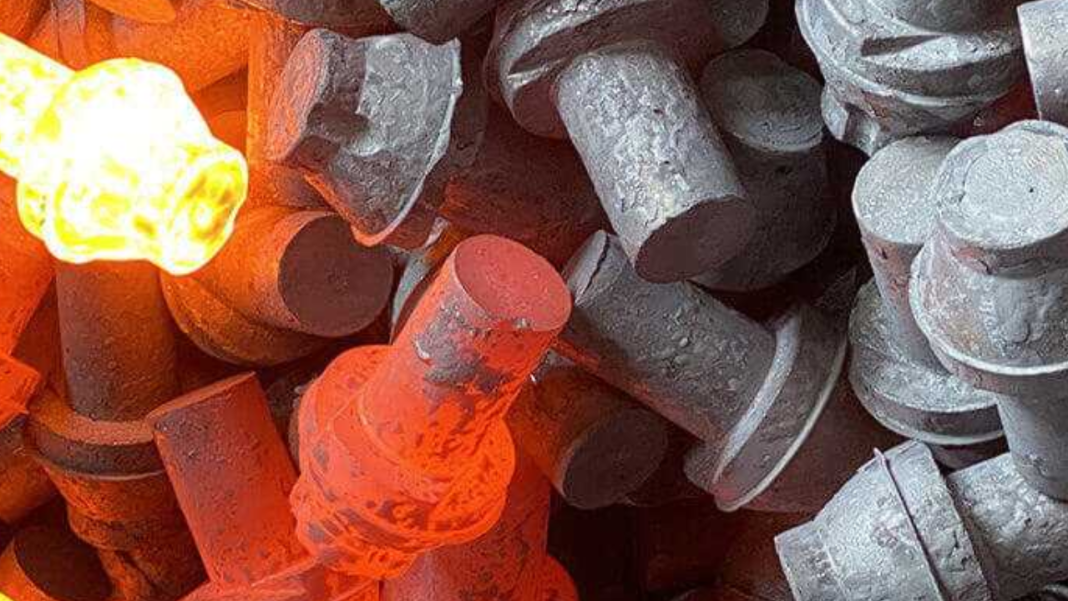Forging is a metalworking process that involves shaping metal with compressive forces. It is a technique for improving the mechanical characteristics of materials through controlled deformation. The procedure typically begins with heating the metal to a proper temperature to increase its malleability, followed by precision shaping with hammers, presses, or dies.
Forging can be classified into three types: open-die forging, closed-die forging, and impression-die forging. Each form is adapted to a unique use. To learn more about CXINFORGIGN, Forging is notable for its capacity to produce components with a refined grain structure, which results in increased strength, hardness, and longevity.
Forging Process: Techniques and Considerations for Optimal Results
The following are essential factors to take into account to achieve accuracy during the forging process:
Material Selection and Preparation
Precision in forging begins with careful material selection. Steel, aluminum, and titanium are common metals chosen based on their unique purpose and required attributes. The material must be of excellent quality, devoid of impurities, and have appropriate metallurgical properties for the forging process. Heating the material to an appropriate temperature improves its plasticity and facilitates deformation during forging.
Die Design and Tooling
The design of forging dies and tooling is critical to ensuring process precision. To match the final shape of the forged object, die designs must be thorough. Computer-Aided-Design (CAD) and simulation tools are widely used to optimize die design by considering aspects like material flow, stress distribution, and cooling rates. The dies are then produced to exact specifications using precision machining procedures.
Temperature Control
Temperature management is crucial during the forging process for achieving optimal material flow and preventing defects. High temperatures are routinely used in forging, allowing the material to deform more freely. Temperature must be carefully maintained to avoid overheating or underreacting, both of which can result in undesirable outcomes such as cracking or poor material flow.
Forging Method Open and Closed Die
Open-die forging and closed-die forging are the two basic forging methods, each with its own benefits and applications. Shape the material between flat dies in open-die forging, allowing greater freedom in generating different shapes. Closed-die forging, on the other hand, uses enclosed dies that allow for perfect control of the final shape and dimensions of the item.
Use of Hydraulic Press and Hammer
The workhorses of the forging process are hydraulic presses and hammers, which provide the force required to shape the material. Modern hydraulic presses offer precise control over force delivery, allowing for consistent deformation and decreasing the possibility of flaws. The use of programmable controllers allows for fine-tuning forging parameters such as force, speed, and dwell time, contributing to the process’s overall precision.
Precision Forging In Closed Die Process
Precision is intrinsically higher in closed-die forging because of the regulated environment offered by the enclosed dies. However, extra procedures can be done to improve precision even further. The use of programmable logic controllers (PLCs) enables the automation of the forging process, ensuring uniform application of force, precise die movement, and predictable outcomes.
Post-Forging Treatment and Finishing
Precision extends beyond the forging stage to post-forging treatments and finishing operations. Heat treatment, such as quenching and tempering, is frequently used to optimize the mechanical properties of a material. These post-forging operations add to the overall precision and quality of the forged components.
Advanced Stimulation and Modeling
The application of modern simulation and modeling technologies has transformed the forging industry. Engineers can use finite element analysis (FEA) to mimic the forging process virtually, predicting material behavior, stress distribution, and probable faults. This allows for optimizing forging parameters before the start of the physical process, resulting in higher precision and fewer trial-and-error iterations.
Precision and Skill Development
Precision forging necessitates qualified operators and specialists who comprehend the complexities of the operation. Training programs and continuing skill development are essential for ensuring that staff can operate and monitor forging equipment efficiently, evaluate quality data, and make educated decisions to maintain precision throughout manufacturing.
Sum Up
Manufacturers can reliably produce high-quality components with the appropriate mechanical qualities by combining new technology, such as simulation tools and automation, with traditional forging procedures. Precision in forging matches the demanding needs of diverse industries and contributes to the overall efficiency, reliability, and longevity of the forged products.




